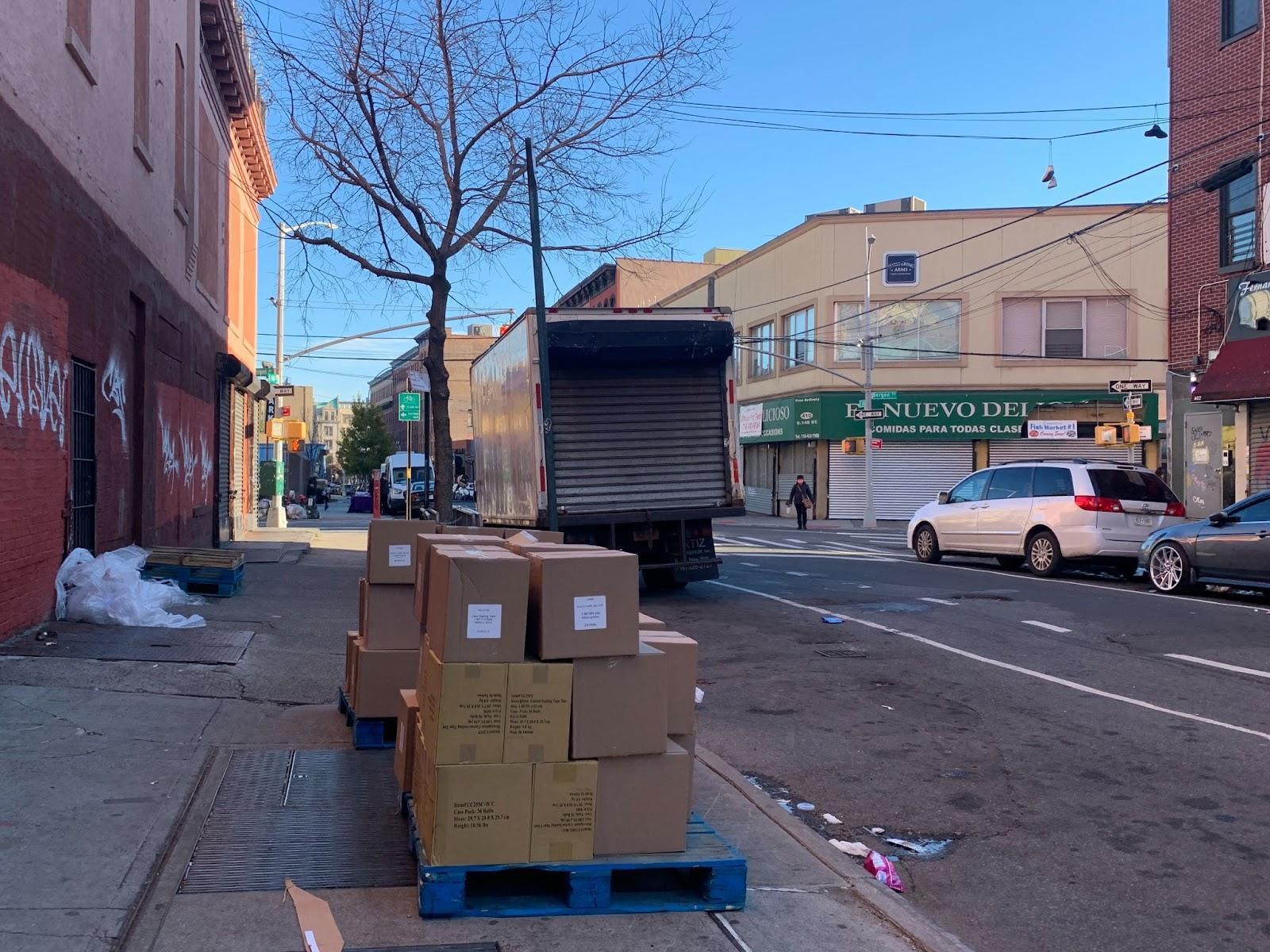While walking home from work, Mildred Leon-Valdez says she’s noticed more recyclable materials around Mott Haven. The cardboard, paper and wrappers are not in bins or trash cans — they’re scattered around walkways and roads.
“Just passing the street, I see that,” said Leon-Valdez, a teacher who has lived in the neighborhood for 27 years.
But as the coronavirus pandemic continues, shoppers in the Bronx aren’t showing any signs of slowing down their demand for packaged deliveries.
Amazon announced this year that its net sales increased to $108.5 billion during the first three months of 2021, compared with $75.5 billion during the same period last year. Leon-Valdez is one of those who have depended on the retail giant during the pandemic.
“Amazon was, like, one of the best things because we didn’t have to go and step out of our homes,” she said.
From Thanksgiving Day to Cyber Monday, consumers spent $33.9 billion online, which was only slightly less than the $34.36 billion spent during the same period last year, according to Adobe Analytics. And the growing threat of the omicron variant of the coronavirus could steer more people away from shopping in person.
In September, the most recent data available, all that extra spending resulted in the city Department of Sanitation collecting 7.1 tons of paper products per day from Community District 1 in the Bronx, almost two tons more than what was collected in that month in 2019, before the pandemic.
Some of those materials are diverted to nonprofits and state programs, so they don’t end up in landfills and incinerators outside the city. This September, the agency diverted 8.3% of “curbside and containerized waste” in Community District 1 and 14.7% in Community District 2, according to the data. But a lot of the eligible waste still lands up on the streets.
Leon-Valdez believes that accessibility is one big reason for that in Mott Haven. Growing up, she lived in a private community where recycling instructions were clear and bins were made available to residents. But since getting married and moving to a new building, recycling has become more difficult.
“People just throw everything down the garbage chute, and there’s not a lot of recycling,” she said.
As of February 2020, the Bronx had 108 public recycling bins, compared with 187 in Manhattan, according to data from the city sanitation department.
And a 2015 lawsuit brought by several South Bronx public housing complexes argued that the New York City Housing Authority’s recycling bins were difficult to access — either too small, behind chain-link fences or non-existent.
The street litter is more than just an eyesore. The city is home to many wildlife animals, including coyotes, eastern gray squirrels and bald eagles, and some of them mistake the recyclable materials for food, according to the National Wildlife Federation. Ingesting plastic, paper or other products can poison animals, and when litter slips through catch basins, which are designed to drain runoff water, it pollutes the city’s expansive waterbodies.
Michael Altobelli is vice president of recycling for Pratt Industries, a box manufacturer that works with the city to turn New Yorkers’ discarded cardboard into boxes at the company’s paper mill on Staten Island. The raw material is turned into pulp and then shaped into recycled boxes that are sold online.
Altobelli said the daily collection of recyclable materials decreased in March 2020, when some people left the city at the height of the pandemic. But it has since picked up.
“As you’ve come out of lockdown and restaurants and things have opened up and people have come back to the city, that number has gone back up,” Altobelli said.
Leon-Valdez said education — for adults and children — could go a long way to make sure less of those materials end up on the streets.
“I work in a school, that’s something that a lot of teachers don’t teach kids,” she said.

